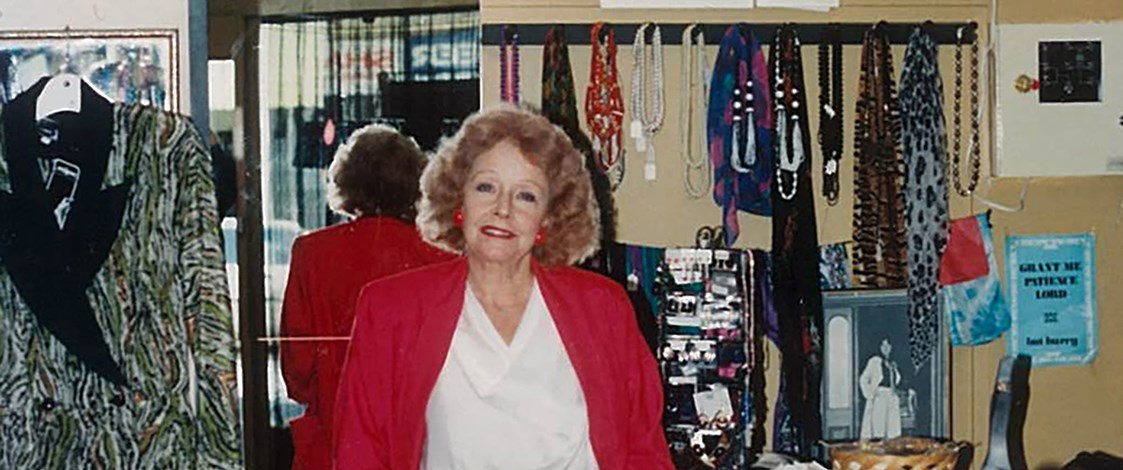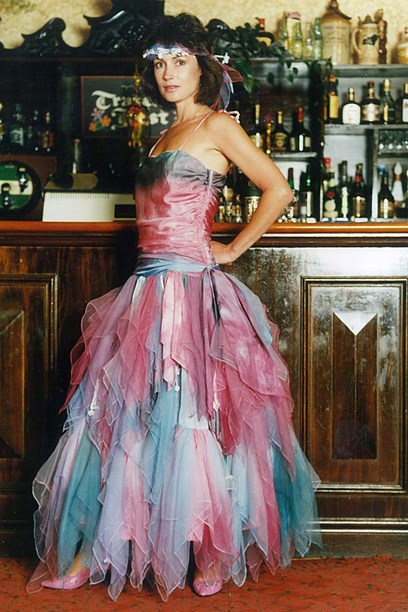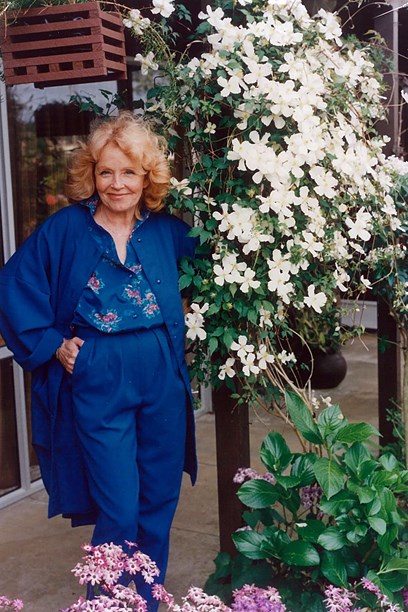Stories
Neridah Haworth
1930-2018

Whangarei-based artist, designer and businesswoman Neridah Haworth is reputed to have entered the Benson & Hedges Fashion Design Awards more times than anyone else.
Neridah started sewing at a young age on an "ancient" machine her father bought her. Early creations were made for her dolls but she progressed to designing garments for herself and her twin sister to wear to local dances. She drafted her own patterns - showing a talent for conceptualising the garment, then translating the idea into reality and often adapting her original design concept as she went. When Neridah did use commercial patterns, or on the rare occasion she purchased a ready-to-wear item or op-shop find, she would customise the garment. This experimental and chance approach to design remained a feature of her practice throughout her career.
Neridah entered the Benson & Hedges Fashion Design Awards for the first time in 1976 with an evening dress that won a Highly Commended Award. The thrill and excitement of participating in the event set in motion a long time love affair with entering fashion awards.
The following year, while on a working holiday in Australia sorting sapphires, Neridah entered the Benson & Hedges competition again. Working from a small caravan with an old borrowed singer sewing machine, she created a garment that she named 'Sapphire' inspired by her holiday job. With no mirror and no room to cut the garment, Neridah had to improvise by designing a dress in a loose fitted style with a handkerchief hem. Although it was unplaced in the awards it was selected for a tour of New Zealand.
There were times when Neridah questioned the judges' decision and vowed never to enter another awards, but her competitive spirit always won through and she continued to enjoy success. In 1984 she won the Woolgrowers Award for a garment made from perendale yarn. In 1991 she won the Menswear Category for a suit with a "country squire look".
Neridah’s enthusiasm for entering fashion awards did not stop with the Benson & Hedges. In 1987 she won three first prizes, two seconds and three thirds at the New Zealand Easter Show, taking home prizes totalling $3,500. In 1992 she received a Highly Commended for a garment entered in the Opotiki Fibre and Fleece Design Award.
Neridah was interested in all aspects of design and made pottery and other objects for her home. This broad interest in craft was evident in her Benson & Hedges entries, which included techniques such as hand knitting and appliquéd work.
A jacket and dress nominated for the After-Five High Fashion category of the 1987 Benson & Hedges comprised of more than 100 tie dyed silk and chiffon scarves; while her entry in the 1986 Leisure Lifestyle award consisted of five separate pieces in tie dyed satin and silk with an appliqué vest.

Neridah Haworth used more than 100 tie-dyed silk and chiffon scarfs to make this dress, and a matching coat.
Her most time consuming garment - created in 1988 - was made up of a fitted jacket in mauve leather, pure silk trousers and a blouse which was dyed and tie dyed to match the colour of the leather. To perfect the colour match Neridah had pots of dye bubbling for hours on the home stove. Although this garment did not receive a nomination for the main awards it was selected for the Highlights parade. Highlights garments were creations which had just missed out on being nominated for the Benson & Hedges - the highlights were paraded live to the audience before the main televised event.
Neridah and her twin sister Vanessa grew up in Pahiatua and Hamilton. She married a local farmer, Peter Haworth, when she was 20 and when Peter retrained for the police force the family moved from Matamata to Whanganui. They eventually settled in Whangarei where Neridah was instrumental in starting the city’s first craft market - the Bank Street Craft Market in the early 1970s.
The market gave her an outlet for her designs but, by 1978, there was enough demand for her to open Neridah’s Boutique at 22 James Street in Whangarei. The local newspaper marked the occasion with a feature article on Neridah sitting in a room full of clothes she had designed for the store with the tagline: 'Neridah Makes Dress in 90 Minutes'.
After 10 years she relocated to 1 James Street, creatively promoting her shop as the "No. 1 boutique". Life as a businesswoman was busy - Neridah would cut fabric out in the evenings and sew during the day from her shop. She manufactured her own stock with the assistance of two outworkers, Lyn Smith and Merle Owens.
At the height of her career she was running two stores. Neridah’s Boutique catered to mature women and The Optimist (at 82 Cameron Street) targeted a younger demographic. Her loyal client base included both local and Auckland women who were after "something a bit different". In 1987 her career took a new direction when a local clothes manufacturer asked her to design a range of winter clothes for sale nationwide; 700 garments were put into production from a sample range of 59.

Neridah outside her house wearing one of her own designs, mid 1980s.
When Neridah closed the shop after 18 years in business she resumed painting. She started painting at adult education evening classes in Matamata and it was an activity she would return to throughout her career. During a working holiday in Australia in 1977, she painted and sketched the Australian outback. As her oeuvre developed so did her subject matter ranging from portraiture to landscape and still life and working in watercolour, oil, acrylic, pastel and hand painted silk. An exhibition of her floral paintings at Paihia’s Village Green in the 1990s attracted organisers of the Seattle Flower and Garden Show who selected some of her watercolours for an art exhibition connected to the North American event. For Neridah there was a synergy between designing clothes and painting and she continued to hold regular art exhibitions in Whangarei, and at her home, until her retirement in 2014.
Text by Natalie Smith. Banner image of Neridah in her boutique on James Street, Whangarei. Image © Vicki Andrews.
Last published April 2018.